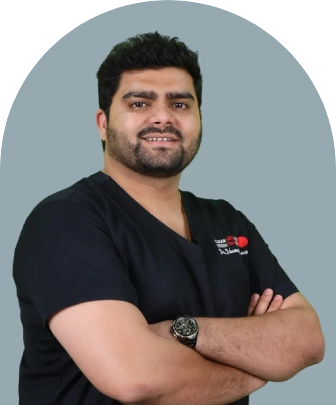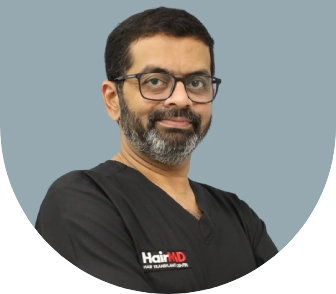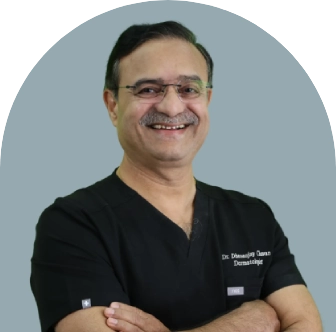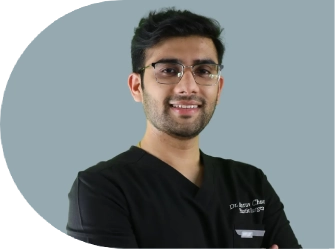Acne vs Pimples: What’s the Difference?
Reviewed By: ![]() Dr. Dhanraj Chavan
Dr. Dhanraj Chavan
Updated on: 17th May, 2025
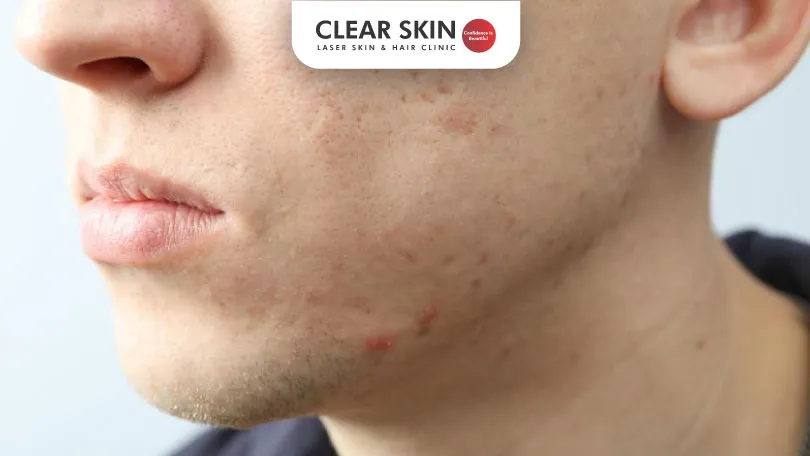
Yet many people aren’t aware that there’s a difference between acne and pimples, and use the two terms interchangeably. Let’s understand the difference between acne and pimples
We’ve all suffered from acne and pimples at one time or another, haven’t we? And many of us are still suffering from it.
It’s worse when they choose to make an appearance just before a big day, but stubborn repeated breakouts are equally bad. They are unappealing, affect your self-esteem and confidence, and it is high time we got the better of them.
Table Of Content
- Acne
- Pimple
- Key Differences Between Acne and Pimples
- Causes and Risk Factors
- Treatments for Pimples and Acne
- When to Consult a Dermatologist
- Conclusion
Acne
Acne is one of the most common skin conditions, affecting lots of people worldwide. It occurs when hair follicles become clogged with oil (sebum) and dead skin cells, resulting in a buildup that blocks pores. This can lead to various types of lesions, including blackheads, whiteheads, papules, pustules, nodules, and even painful cysts. Acne can range from mild breakouts to severe forms that may cause inflammation, pain, and scarring. Left untreated, severe acne can have lasting physical and emotional effects.
Acne is often a chronic condition, meaning it can persist for years or recur over time, especially during periods of hormonal fluctuation, such as puberty, pregnancy, or menopause. Proper management is key to minimizing its impact.
Pimple
Pimples, on the other hand, are a specific symptom of acne. They occur when clogged pores become inflamed, usually due to the growth of bacteria such as Cutibacterium acnes (formerly known as Propionibacterium acnes). Pimples can appear as red, tender bumps and often contain pus, creating a raised appearance on the skin.
Unlike acne, which encompasses a range of skin concerns, pimples are isolated lesions. While they are a hallmark of acne, not all acne involves pimples. For example, non-inflammatory forms of acne, like blackheads and whiteheads, do not involve redness or swelling. Pimples are usually inflammatory in nature and may vary in size and severity.
Key Differences Between Acne and Pimples
|
Feature |
Acne |
Pimples |
|---|---|---|
|
Definition |
A skin condition |
A symptom of acne |
|
Scope |
Includes multiple lesion types |
One type of lesion (inflamed bump) |
|
Duration |
Often chronic or long-term |
May be occasional or short-term |
|
Treatment |
Requires comprehensive care |
May respond to spot treatment |
|
Causes |
Hormonal changes, genetics, bacteria |
Blocked pores due to oil, dirt |
Understanding these differences can help you identify your specific skin concerns and address them appropriately.
Causes and Risk Factors
Both acne and pimples share common causes, such as clogged pores, but their development is influenced by several factors:
- Hormonal Changes: Hormonal fluctuations during puberty, menstruation, pregnancy, or periods of high stress can increase sebum production, leading to clogged pores and breakouts.
- Diet: Some studies suggest that high-glycemic foods, sugary snacks, and dairy products may exacerbate acne in certain individuals. Monitoring your diet may help reduce the frequency or severity of breakouts.
- Genetics: A family history of acne increases your likelihood of developing the condition. This genetic predisposition may influence how your skin reacts to hormones and bacteria.
- Skin Care Products: Using comedogenic (pore-clogging) products can trap oil and debris, leading to acne and pimples. Non-comedogenic or oil-free products are better choices for acne-prone skin.
- Environmental Factors: Humidity, pollution, and even frequent use of masks (maskne) can contribute to clogged pores and breakouts.
Treatments for Pimples and Acne
पिंपल के प्रकार, कारण और उपाय (Acne: Types,Causes & Treatments) | Clear Skin, Pune
For Pimples:
- Topical Treatments: Over-the-counter products containing benzoyl peroxide or salicylic acid are effective for reducing redness and inflammation. These ingredients work by killing bacteria, unclogging pores, and promoting cell turnover.
- Proper Hygiene: Regularly cleansing your face with a gentle, non-comedogenic cleanser can help prevent pimples. Avoid picking or squeezing pimples, as this can lead to scarring and further inflammation.
- Spot Treatments: Products like tea tree oil, sulfur masks, or hydrocolloid patches can be used directly on pimples to speed up healing.
For Acne:
Acne Treatments Explained
Dermatologists often prescribe topical treatments like retinoids (e.g., tretinoin or adapalene) to manage acne. The type of treatment depends on the severity and type of acne. Over-the-counter (OTC) options may also help.
Common OTC Acne Medications:
- Differin (adapalene 0.1%): A mild retinoid available without a prescription.
- Benzoyl peroxide: Helps reduce acne-causing bacteria.
- Salicylic acid: Sometimes used but less common in Acne treatment plans.
Prescription Topical Medications for Acne:
- Antibiotics: Like clindamycin, to reduce bacteria and inflammation.
- Azelaic acid: Helps unclog pores and reduce redness.
Prescription Oral Medications for Acne:
- Anti-androgen agents: For hormonal acne (e.g., spironolactone).
- Antibiotics: Such as doxycycline, to reduce inflammation.
- Combined oral contraceptives: For hormonal balance.
- Isotretinoin: A powerful treatment for severe acne.
Other Acne Therapies:
- Chemical peels: Exfoliates and improves skin texture.
- Light therapy: Includes photodynamic or intense pulsed light (IPL) to target acne-causing bacteria.
Always consult a dermatologist to find the best treatment for your skin.
When to Consult a Dermatologist
If your acne or pimples persist despite over-the-counter treatments, or if they cause physical discomfort or emotional distress, it’s time to see a dermatologist at Clear Skin Clinic Pune. A dermatologist can assess your skin and create a customized treatment plan, addressing the root causes of your acne. Seeking professional help early can also reduce the risk of scarring and long-term damage.
Do You Know?
Roughly 250 Patients Are Treated
Everyday By These Dermatologists
(You are one click away from flawless skin)
Meet Our Dermatologist!
Conclusion
Understanding the difference between acne and pimples is essential in finding the right treatment. While pimples are a specific symptom of acne, the condition as a whole encompasses a wide range of skin issues that may require more comprehensive care. By identifying the root causes and taking action—whether through over-the-counter products, lifestyle changes, or professional treatments—you can work towards clearer, healthier skin. Don’t hesitate to seek advice from our Best dermatologist for Acne personalised Treatment and support.
Further Reading
How to Avoid Acne in Monsoons?
Avoid acne in monsoons with a gentle skincare routine, diet tips, and hydration. Get expert advice to manage breakouts and keep your skin clear and healthy.
Does Makeup Cause Acne-Prone Skin?
Worried about breakouts from using makeup? Does makeup cause acne for you? Learn the safe ways to apply makeup for acne-prone skin.
Morning Skin Care Routine for Glowing Skin
Clear Skin Clinic, led by top dermatologists, shares the ideal morning skincare routine to help you achieve a radiant complexion naturally and effectively.
Monsoon Skin Care Tips for Radiant, Healthy Skin
Clear Skin Clinic, led by top dermatologists, shares the ideal morning skincare routine to help you achieve a radiant complexion naturally and effectively.
Have thoughts? Please let us know
We are committed not only to treating you, but also educating you.

